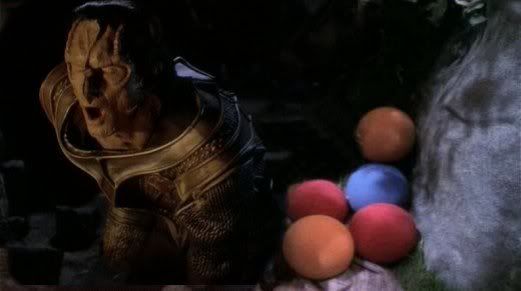No, it doesn't suggest that Cardassians will EVER be like humans, nor that they will ever become mammalian as we understand the term. Their traits fit their world, presumably, and have continued to do so for many eons. It simply suggests that evolution took a different track and that types of life cannot be divided in the same way on Cardassia Prime as they can be on Earth, that different terminology is required. (If anything, without the Permian-Triassic extinction, we would have stood a chance to be more like them.)
At least, if it's my particular theory you're talking about, I don't know why you chose to read some sort of hidden racism into it.
The reason Cardassians look like we do is because they evolved from an animal that had a higher probability of looking like a human than an Earth reptile.
Humans evolved from earlier primates and that's the reason we look the way we do. If we evolved from Earth reptiles, we would not (I don't think) look like Cardassians - lizard men.
It's pretty unrealistic for the aliens on Trek to look so much like humans as they do. It's budget and little else. If in 1966 they had CG tech from 2066, we'd never have seen any humanoid aliens on Trek. They'd just be voiced by human actors.
It would be unrealistic if we thought that on other planets, life evolved into animal groups like the ones that did on Earth. Green scaly reptiles and warm-blooded hairy mammals and hollow-boned feathery birds are only Earth life-forms. Would you call this a bird?
...Come to think of it, maybe you should. If there's a different taxonomic term for flying creature on every planet then that's a lot of terms...bird, pouli, toka, kgi, wuluwulu, x!pop, etc, etc, times a million...they all mean "flying creature" regardless of what they look like or reproduce or anything else biologists look at.




 ) who don't utilize at all the ultraviolet information available to us.
) who don't utilize at all the ultraviolet information available to us.


